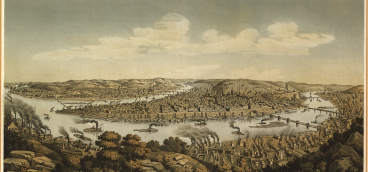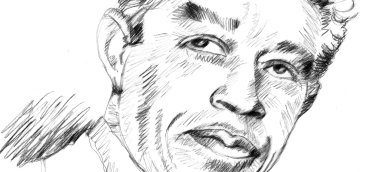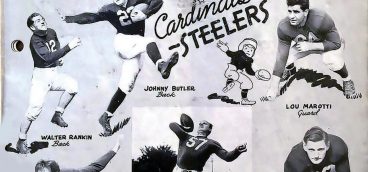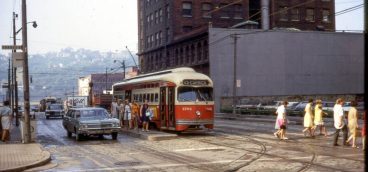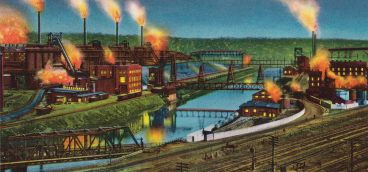Pittsburgh’s Contributions to the World, Pt. IV
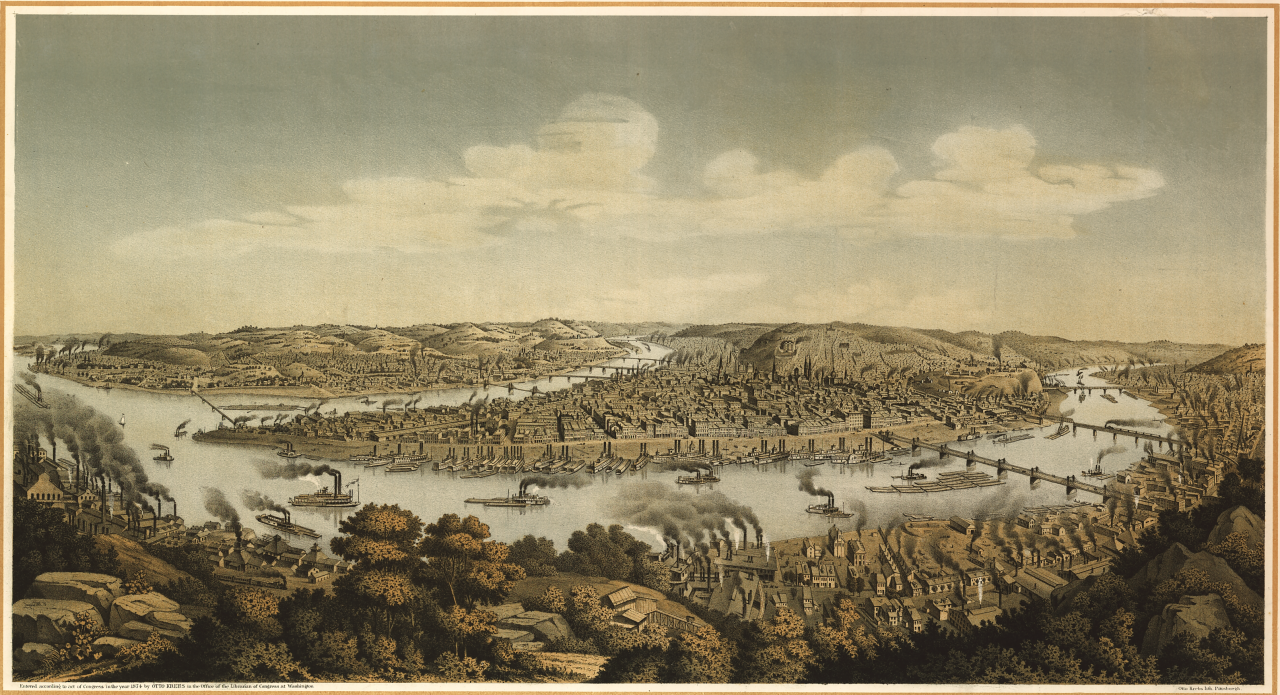
To celebrate the beginning of our 20th year, we’ve set out to catalogue the contributions that Pittsburgh and western Pennsylvania have made to the world. The list has grown and grown, and despite our best efforts, we know we’ll leave out key contributors. I think you’ll find that this small city at the confluence of three rivers has played an astonishingly outsized role in the creation of this country and the world we inhabit. So, read on, and be inspired to pick up the gauntlet and take your turn in building this great American city – Douglas Heuck
The First Banana Split
The classic American dessert was invented in 1904 at Tassel Pharmacy in Latrobe. David Strickler, a pharmacy apprentice, created the treat by combining a split banana with scoops of ice cream, chocolate syrup, whipped cream and cherries.
TIAA-CREF – Financial Security for Teachers
Andrew Carnegie played the seminal role in creating what would become TIAA-CREF, a leading financial services organization for educators and nonprofit workers. In 1905, Carnegie established the Carnegie Foundation for the Advancement of Teaching, which later introduced a pension system for college professors. This initiative aimed to provide financial security for educators, aligning with Carnegie’s belief in the transformative power of education. The pension system evolved into TIAA-CREF (Teachers Insurance and Annuity Association–College Retirement Equities Fund). Carnegie’s foundational vision of supporting educators’ financial well-being continues to influence the organization’s mission today.
The Cradle of the Movies
Pittsburgh was the key launching pad for movies and the American film industry. The Nickelodeon, which opened in 1905 on Smithfield Street, Downtown, was the world’s first dedicated movie theater. The theater charged five cents for admission, offering working-class audiences an affordable way to enjoy short silent films. The Nickelodeon’s success started a new era in entertainment, converting film from a novelty into a popular medium. The concept quickly spread across the U.S., laying the groundwork for the modern cinema experience.
In addition to exhibitions, Pittsburgh contributed to early film production and technology. The city’s industrial resources supported the development of equipment such as projectors and cameras, and its diverse population and urban landscapes provided inspiration for storytelling. Filmmakers capitalized on Pittsburgh’s rich cultural backdrop, using it as a setting for early silent films and newsreels. The industry ultimately moved to California for its greater abundance of natural light, which expanded the number of hours for filming.
The Warner Brothers, founders of Warner Bros. Studios, began their journey in the entertainment industry in western Pennsylvania. Brothers Harry, Albert, Sam, and Jack immigrated with their family from Poland and opened a movie theater in New Castle. Their early ventures in the film industry laid the foundation for their eventual move to Hollywood and the establishment of Warner Bros. in 1923. The brothers’ innovations, including the development of synchronized sound films like “The Jazz Singer” in 1927, reformed the industry.
David O. Selznick, legendary producer of such films as “Gone with the Wind,” was born in Pittsburgh in 1902 and his work defined the Golden Age of Hollywood. His meticulous attention to detail and grand storytelling made him one of the most influential figures in cinema.
Harry K. Thaw – The Trial of the Century
Thaw was a Pittsburgh heir to a coal and railroad fortune who became infamous for his role in the “Trial of the Century.” In 1906, Thaw shot and killed architect Stanford White in a jealous rage over White’s prior relationship with Thaw’s beautiful wife, Tarentum-born Gibson Girl Evelyn Nesbit. The sensational trial that followed captivated the nation, exposing the excesses of the Gilded Age elite.
Lillian Russell – Pioneer of the American Stage
A glamorous actress and singer, Russell was born in Clinton, Iowa, in 1861 but moved to Pittsburgh with her last husband and is buried in Allegheny Cemetery. Known for her beauty, charm, and operatic voice, Russell became a star of the American stage in the late 19th and early 20th centuries. She captivated vaudeville and operetta audiences and excelled at comic opera including Gilbert and Sullivan works. Married four times, her longest relationship with boyfriend “Diamond Jim” Brady lasted 40 years. In later life she was an advocate of women’s suffrage and wrote a column for her husband’s newspaper, The Pittsburgh Leader.
Ida Tarbell – The Woman Who Took on Standard Oil
Tarbell was one of the most influential journalists of the Progressive Era and deeply connected to Pittsburgh’s industrial landscape. The Pennsylvania native and investigative reporter was best known for her groundbreaking exposé on Standard Oil Company. Published in McClure’s Magazine in the early 1900s, her work revealed the monopolistic practices of John D. Rockefeller and played a significant role in shaping modern investigative journalism. Her in-depth reporting on Standard Oil, based partly on her observations of the industry’s impact on local communities, exposed widespread corruption and unethical business practices. Her work led to public outcry and contributed to antitrust legislation that curbed corporate monopolies. Tarbell also wrote about industrial labor, women’s rights, and the challenges of economic inequality. Her fearless journalism set a standard for integrity and accountability.
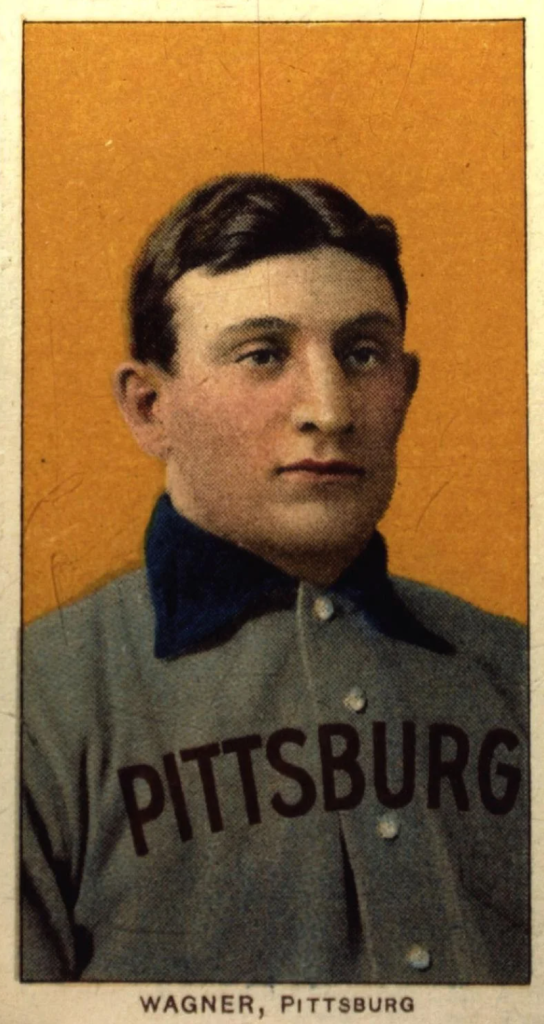
Honus Wagner – The Flying Dutchman
Wagner was one of the greatest baseball players in Major League history and a Pittsburgh sports legend. Born in 1874 in Carnegie, Wagner spent most of his career with the Pirates, playing from 1897 to 1917. Known for his exceptional hitting, speed, and defensive skills, Wagner won eight batting titles and was among the first five players inducted into the Baseball Hall of Fame in 1936. His T206 baseball card is one of the rarest and most valuable collectibles in the world, symbolizing his enduring popularity.
The World’s First Drive-in Filling Station
Gulf Oil opened the first gas station in Pittsburgh in 1913 at the corner of Baum Boulevard and St. Clair Street in East Liberty, introducing the concept of convenience for motorists with fuel, tire repairs and other services.
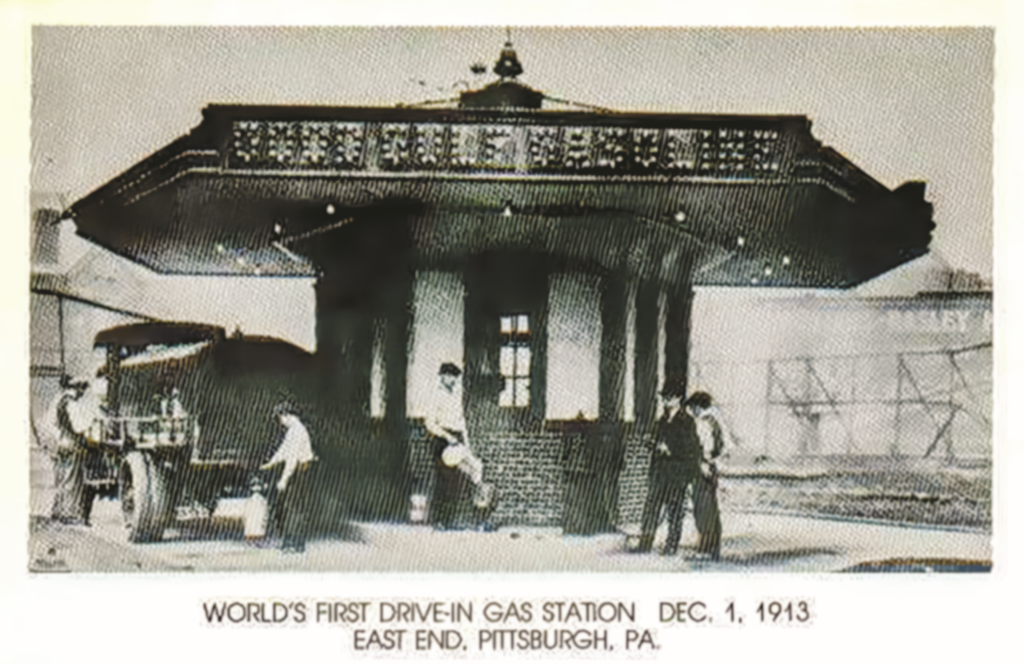
Mine Safety Appliances (MSA) and Worker Safety
A Pittsburgh-based company founded in 1914, MSA became a global leader in workplace safety with its innovative products. The company’s first invention, a portable breathing apparatus for miners, was created in response to deadly mine explosions. This technology saved countless lives and set the standard for industrial safety equipment. Over the decades, MSA expanded its portfolio to include helmets, gas detectors, and protective gear for various industries.
Willa Cather – Wrote “My Antonia”
The acclaimed author was born in Virginia in 1873 but spent her formative years in Pittsburgh. While living in the city, Cather worked as a journalist and teacher, honing her literary skills. Her Pittsburgh experiences influenced her writing, which often explored themes of identity, resilience, and the American frontier. Cather’s legacy includes classics such as “My Ántonia” and “O Pioneers!,” which solidified her place as a great American novelist.
Robert Garland – Daylight Saving Time
Garland was a Pittsburgh businessman and City Council member who was instrumental in the adoption of Daylight Saving Time in the U.S. In the early 20th century, Garland advocated for the practice as a way to conserve energy, extend daylight hours for productivity, and improve public health. Inspired by similar initiatives in Europe, he lobbied Congress to implement the time change nationally. In 1918, Garland’s efforts culminated in the Standard Time Act, which established Daylight Saving Time during World War I.
The Clark Bar
The beloved American candy bar was first produced in 1917 by the D.L. Clark Company in Pittsburgh. Known for its crunchy peanut butter core coated in milk chocolate, the Clark Bar became a favorite treat for generations of candy lovers.
The Pittsburgh Agreement
Signed on May 31, 1918, in Pittsburgh, it played a key role in the creation of Yugoslavia. The treaty was an agreement between representatives of Slovak and South Slav communities in the U.S., outlining support for the unification of Serbs, Croats, and Slovenes into a single state after World War I. The Pittsburgh Treaty reflected the aspirations of ethnic communities seeking freedom from Austro-Hungarian rule. Crafted in a city with a large immigrant population, the agreement was a significant step in shaping Yugoslavia’s foundation. Notable signatories included Tomáš Masaryk, the future president of Czechoslovakia, and leaders of the Yugoslav immigrant community. The agreement expressed support for a federal system that would respect the autonomy of individual ethnic groups.
KDKA – The World’s First Commercial Radio Station
On Nov. 2, 1920, Pittsburgh’s KDKA radio station made history by airing the first commercial radio broadcast in the world. Owned by Westinghouse Electric Corporation, KDKA broadcast the results of the presidential election between Warren G. Harding and James M. Cox, captivating listeners. In the new era in mass communication, KDKA’s success demonstrated the potential of radio to deliver news and entertainment to a wide audience. The station quickly expanded its programming to include music, drama and sports, becoming a model for other broadcasters. The station’s early broadcasts relied on Westinghouse’s innovative radio technology, developed in Pittsburgh. This connection between industry and media exemplified the city’s ability to integrate innovation with practical applications, shaping the future of communication and the way people connected with news and entertainment.
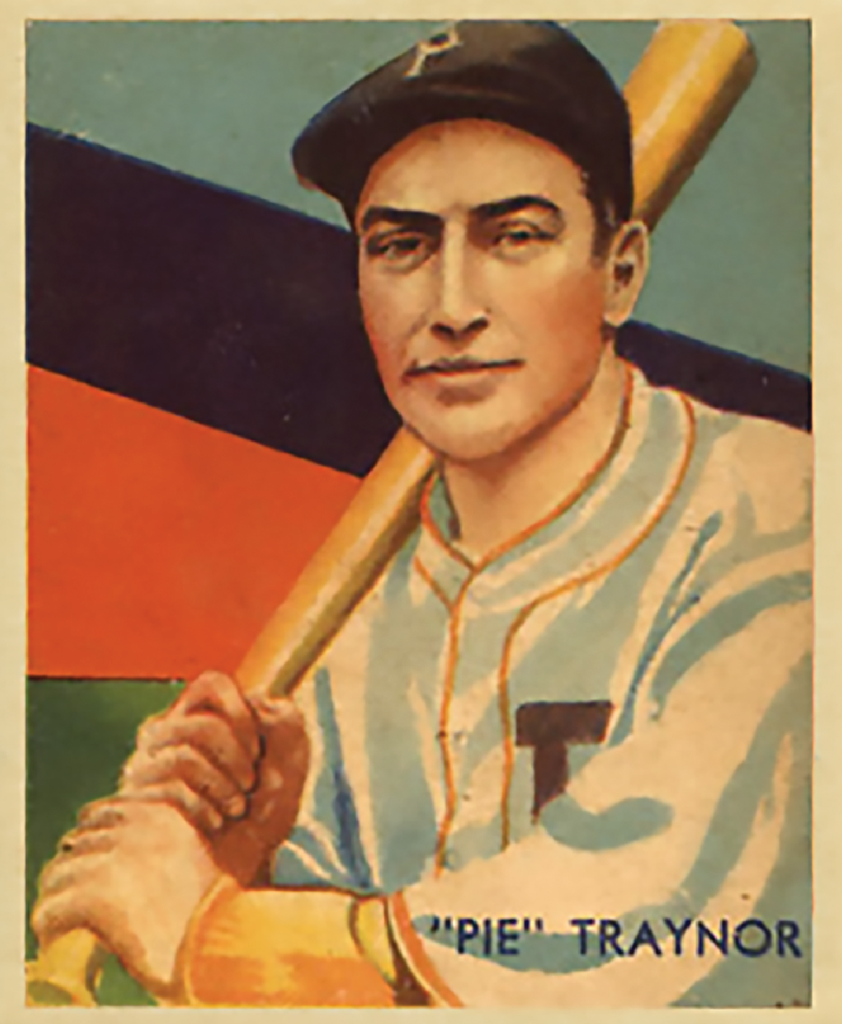
Pie Traynor – Pirates’ Third Baseman
One of the greatest third baseman in Major League Baseball history, Traynor spent his career with the Pittsburgh Pirates. Born in Massachusetts in 1899, Traynor joined the Pirates in 1920 and quickly established himself as a bedrock of the team. Known for consistent hitting and outstanding defensive skills, Traynor helped lead the Pirates to a World Series championship in 1925. After retiring, he became a popular sports broadcaster in the city, endearing himself to generations of fans. Traynor was inducted into the Baseball Hall of Fame in 1948.
Vladimir Zworykin – The Father of Television
Often called the “Father of Television,” Zworykin was an engineer and inventor at Westinghouse in Pittsburgh during the early 20th century. Born in Russia in 1888, Zworykin emigrated to the U.S. after the Russian Revolution and joined Westinghouse Electric in 1920. He developed key components of modern television technology, including the iconoscope, the first practical television camera tube, and the kinescope, an early cathode ray tube for displaying images. Zworykin’s groundbreaking work laid the foundation for the commercial development of television, transforming communication and entertainment worldwide.
Pittsburgh Rare
The unique way of preparing steak originated in Pittsburgh’s steel mills. The cooking method involves searing the steak at an extremely high temperature, leaving the outside charred while the inside remains rare. This quick and efficient technique reflects the practical and industrious spirit of Pittsburgh’s working class and has become a culinary trademark.
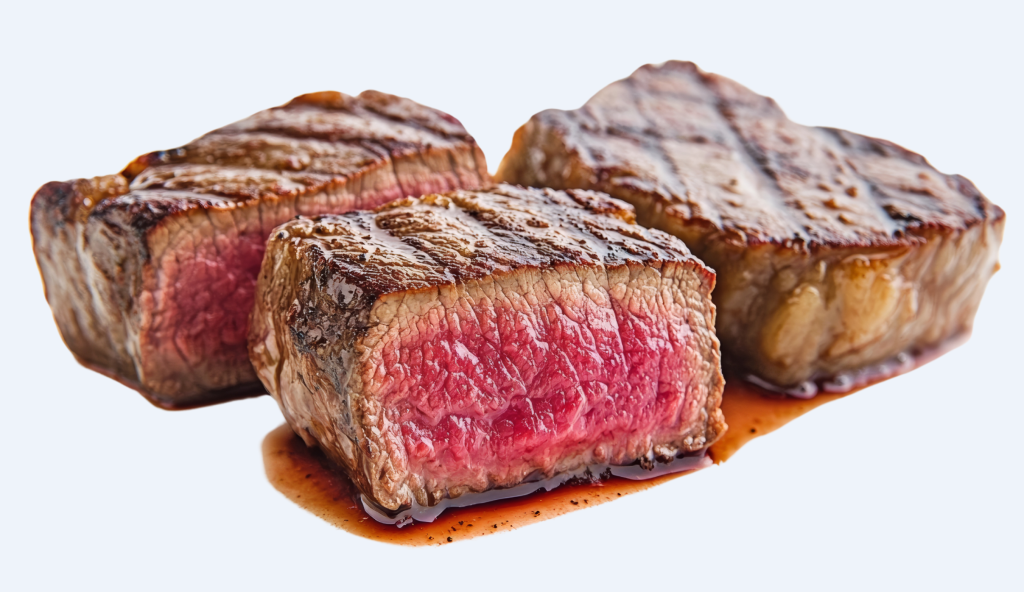
The Phillips Collection in Washington, D.C.
Located off Dupont Circle, America’s first museum of modern art was founded in 1921 by Duncan Phillips, an heir to Pittsburgh fortunes in steel from his mother’s side and glass from his father’s side. Phillips envisioned a space that would showcase modern art in an intimate, domestic setting, allowing visitors to engage with works on a personal level. The museum’s collection includes masterpieces by Pierre-Auguste Renoir, Mark Rothko, Georgia O’Keeffe, and Vincent van Gogh. It’s particularly renowned for its Rothko Room, an immersive space dedicated to the works of the abstract expressionist.
Gertrude Stein – Novelist and Doyenne of the Lost Generation
Stein was an avant-garde writer and art collector who was born in Allegheny (now part of Pittsburgh) in 1874. Known for her experimental writing style and influential role in the Parisian art scene, Stein’s salon hosted a continual gathering of ex-pat writers including Ernest Hemingway and F. Scott Fitzgerald and championed artists such as Picasso and Matisse. Her works, including “Tender Buttons” and “The Autobiography of Alice B. Toklas,” pushed the boundaries of modern literature. She coined the term “The Lost Generation” for the disillusioned writers who came of age during World War I.
Martha Graham – The Mother of Modern Dance
Graham was a revolutionary dancer and choreographer born in Allegheny City (now Pittsburgh) in 1894. Widely regarded as the mother of modern dance, she developed a groundbreaking technique that emphasized emotion, movement, and the human form. Her choreography broke away from classical ballet conventions, creating a new language of dance that expressed the complexities of human experience. During her illustrious career, Graham created over 180 works, collaborating with composers such as Aaron Copland and artists such as Isamu Noguchi.
Clarence “Pinetop” Smith – The Father of Boogie Woogie
Pittsburgh played a role in the spread and popularity of boogie-woogie, a lively and improvisational style of blues piano, through Clarence “Pinetop” Smith (so nicknamed for his penchant for climbing trees in his native Alabama). At age 16 in 1920, he moved to Pittsburgh, a thriving center for middle-class blacks with a vibrant entertainment scene. He played piano with notables of the time, including Ma Rainey, “The Mother of the Blues,” whom Pittsburgh playwright August Wilson would immortalize in “Ma Rainey’s Black Bottom” (the Black Bottom was a Jazz Age dance). On Dec. 29, 1928, Smith recorded his “Pinetop’s Boogie Woogie,” which cemented the name for the musical style. A huge hit, it was the first recording to have the phrase “boogie-woogie” in the song’s title. The line “Hold it now/Stop/Boogie Woogie” captured the stop-time anticipation and exuberance of boogie-woogie. At age 25, Smith was shot and killed at a dance hall, but he is part of musical history, inspiring the likes of Tommy Dorsey, Lionel Hampton, Count Basic and Ray Charles.
Mary Roberts Rinehart – America’s Agatha Christie
Rinehart was a mystery writer born in 1876 in Pittsburgh. Her suspenseful storytelling and engaging characters made her one of the most popular authors of her time. Her best-known works, such as “The Circular Staircase” and “The Bat,” helped define the modern mystery genre. She is credited with popularizing the “had I but known” narrative style, which heightened tension by foreshadowing perilous events. In addition to her literary accomplishments, Rinehart worked as a war correspondent during World War I and wrote about her experiences.


